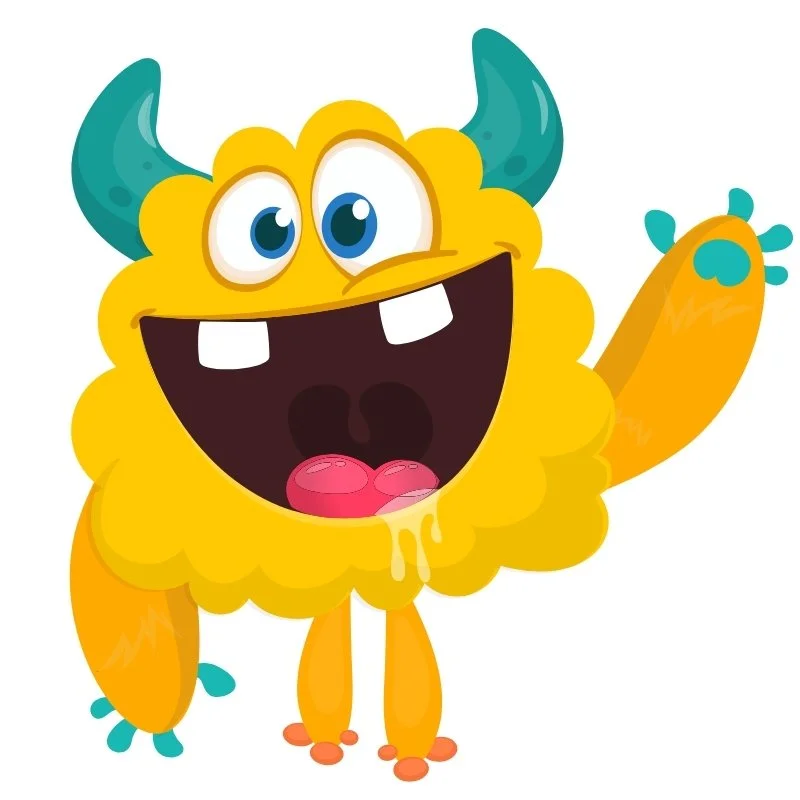Cravelet – The Craving and Compulsion Monster
Cravelet is one of the Visiting Neuro Monsters. Cravelet represents the pull of craving and the loop of compulsive behavior that drives you to seek relief, stimulation, or satisfaction beyond balance. Known as the Craving and Compulsion Monster, Cravelet embodies the restless hunger that keeps returning even when the desire has already been fulfilled. Within the Neuro Monsters Universe, Cravelet reveals how the cycle of craving can hijack the nervous system and create patterns of repeated overindulgence, fixation, or obsession.
The Symbolic Role of Cravelet
Cravelet symbolizes the constant itch that demands scratching, no matter how temporary the relief. Its presence shows up when you feel urges that will not quiet down, when you return again and again to the same behavior, or when your body signals restless desire that never fully satisfies. Symbolically, Cravelet represents the endless search for relief, showing how craving becomes a trap rather than a release. By naming Cravelet you begin to notice when desire is a true need and when it is a compulsion pulling you in circles.
Cravelet often appears as a wiry, twitching figure with glowing eyes that dart toward whatever it longs for. Its hands stretch out repeatedly, never resting, symbolizing how craving consumes attention and energy. Facing Cravelet with emotional neutrality allows you to recognize the difference between nourishing needs and compulsive cycles.
Craving and Compulsion in the Brain
In neuroscience terms Cravelet is tied to the dopamine system, the nucleus accumbens, and the orbitofrontal cortex. Dopamine circuits create a surge of motivation when cues signal a possible reward. The nucleus accumbens reinforces the behavior through bursts of pleasure, but the effect fades quickly, leaving the urge intact. The orbitofrontal cortex continues to signal the expected reward, keeping attention locked onto the craving.
Cravelet symbolizes this neural cycle where dopamine spikes drive desire but do not create lasting satisfaction. The brain learns to repeat the behavior, even when the outcome no longer feels rewarding, leading to compulsive repetition.
The Protective Instinct Behind Cravelet
Although it can feel consuming, Cravelet’s instinct is protective. Craving is the nervous system’s way of ensuring you seek resources, stimulation, or comfort to survive. The purpose is to motivate action and prevent stagnation. The problem arises when the system overfires, causing cravings to outpace true needs. This imbalance keeps you chasing relief instead of experiencing balance. By seeing the protective purpose behind Cravelet you can learn to honor desire without being ruled by it.
Training with Cravelet
Training with Cravelet means learning how to pause before responding to craving and to separate genuine need from compulsive urge. Cognitive Neuro Therapy emphasizes naming craving neutrally and practicing replacement patterns that bring calm rather than escalation.
When Cravelet appears you can practice the following steps. Pause and acknowledge the craving without rushing to satisfy it. Name it as craving rather than necessity. Take one slow breath and bring awareness to the body’s signals. Ask yourself if the craving is about nourishment, comfort, or escape. Choose a small grounding action such as drinking water, stretching, or writing the urge down before deciding whether to act.
Over time Cravelet begins to soften not by disappearing but by being trained. You learn that craving is energy that can be redirected toward growth and healing. By meeting Cravelet with patience, you transform compulsion into choice. Cravelet becomes a reminder that desire is part of survival but becomes powerful only when balanced with mindful awareness.


